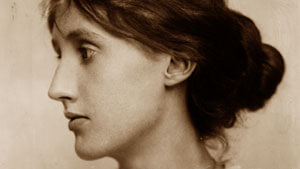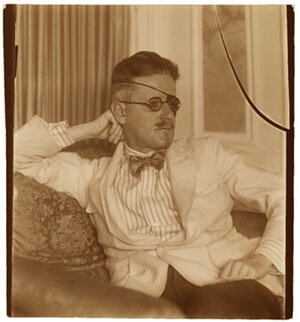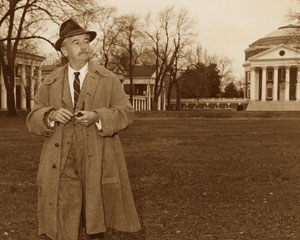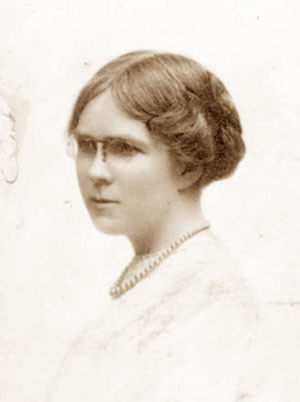Stream of Consciousness Writing
Stream of Consciousness Frequently Asked Questions (FAQ)
Stream of Consciousness Definition
An Introduction to Stream-of-Consciousness Writing
First coined by the psychologist William James in 1890, stream of consciousness writing aims to replicate the inner workings of a character's mind on the page.
At its core, stream of consciousness writing is a free-flowing style of prose that eschews traditional grammar and syntax in favor of a more natural, organic structure. It's a form of writing that seeks to capture the raw, unfiltered thoughts and emotions of a character as they move through the world.
In many ways, stream of consciousness writing is like taking a peek inside someone's head. We see their thoughts, feelings, and perceptions as they happen in real-time, without any sort of editorial filter. It's a technique that can be incredibly effective at immersing readers in a character's world, allowing them to experience the story in a more visceral, immediate way.
Because it requires such a high level of skill and precision, it can be difficult to execute effectively. Writers must be careful not to fall into the trap of simply transcribing their own thoughts onto the page, as this can result in a disjointed, confusing mess.
The best stream of consciousness writing is carefully crafted and meticulously planned. It requires an understanding of narrative structure, character development, and pacing, as well as a deep empathy for the characters themselves.
Stream of consciousness writing can be an incredibly powerful tool for writers. It allows them to explore complex emotional states, delve into the psyche of their characters, and create a sense of intimacy and immediacy that is difficult to achieve through more traditional forms of writing.
Understanding Stream of Consciousness Writing
Stream of Consciousness
Stream of consciousness writing is a style of writing that captures the spontaneous flow of thoughts and emotions in a continuous, unfiltered narrative. This technique was popularized by writers like James Joyce and Virginia Woolf, and has since been used by many other writers as a means of exploring the inner workings of the human mind.
The goal of stream of consciousness writing is to capture the experience of being in the present moment, with all its chaos and unpredictability. It's about letting your thoughts and emotions flow freely onto the page, without worrying about structure or grammar. By doing so, you can tap into a deep well of creativity and self-expression.
One of the key features of stream of consciousness writing is its lack of structure. Unlike traditional forms of writing, stream of consciousness writing doesn't follow a strict narrative arc or adhere to strict grammatical rules. Instead, it's characterized by its meandering, free-flowing nature.
Another important aspect of stream of consciousness writing is its focus on the inner experience. This style of writing is less concerned with external events or plot than it is with the inner thoughts, emotions, and sensations of the writer. This means that stream of consciousness writing can be deeply personal and introspective.
Preparing Yourself for Stream of Consciousness Writing
To effectively engage in stream of consciousness writing, it's essential to create an environment that allows your mind to wander and your creativity to flourish. Here are some tips for preparing yourself for stream of consciousness writing:
Find a quiet and comfortable space:
Choose a quiet and comfortable space where you can be alone and undisturbed. This could be a room in your home, a quiet spot in a park, or a secluded spot in a café.Eliminate distractions:
Turn off your phone, close your email, and shut down any social media notifications. The aim is to create an environment free from external distractions.Choose the right time:
Pick a time of day when you are most alert and creative. For some, this might be first thing in the morning; for others, it might be in the evening after work.Prepare your tools:
Gather your writing tools, whether that be a pen and notebook, a laptop, or a voice recorder. Having everything you need at hand will help you to focus on the task at hand.Create a ritual:
Create a ritual or routine to help you get into the writing mindset. This could involve meditation, stretching, or a cup of tea.
Using the Stream of Consciousness Technique
How to Write Stream of Consciousness
Once you've found your inspiration and overcome writer's block, it's time to dive into the writing process. Here are some effective ways to use the stream of consciousness technique in your writing:
Don't worry about structure:
Stream of consciousness writing is all about letting your thoughts and emotions flow freely onto the page. Don't worry about structure or grammar. Simply write down whatever comes to mind.Write quickly:
The aim of stream of consciousness writing is to capture the spontaneous flow of thoughts and emotions. Write as quickly as possible to keep up with your stream of consciousness.Don't edit as you go:
Avoid editing your writing as you go. This can disrupt the flow of your stream of consciousness and hinder your creativity.Write for a set amount of time:
Set a timer for 10, 15, or 20 minutes and write continuously for that amount of time. This will help you to stay focused and engaged in the writing process.Allow yourself to be vulnerable:
Stream of consciousness writing is an intimate and personal style of writing. Allow yourself to be vulnerable and write from a place of authenticity.
The Power of Freewriting
Freewriting is a technique used in stream of consciousness writing that involves writing continuously without stopping or editing. This technique can be a powerful tool for unlocking creativity and accessing the unconscious mind. Here's how to do it:
Choose a prompt:
Choose a prompt or topic to write about. This could be anything from a single word to a phrase or a question.Set a timer:
Set a timer for a predetermined amount of time. This could be anywhere from five to 20 minutes.Write continuously:
Write continuously without stopping or editing. Don't worry about structure, grammar, or coherence. Simply write down whatever comes to mind.Keep writing:
If you get stuck or run out of things to write, simply write "keep writing" or "I don't know what to write" until the next thought comes to mind.
Using Stream of Consciousness Writing for Self-Discovery
What is the Stream of Consciousness?
Stream of consciousness writing can be a powerful tool for self-discovery and exploration. By tapping into your inner thoughts and emotions, you can gain a deeper understanding of yourself and your experiences. Here are some tips for using stream of consciousness writing for self-discovery:
Write without judgment:
Write without judgment or self-criticism. Allow yourself to explore your inner thoughts and emotions without worrying about how they may appear to others.Write about difficult experiences:
Stream of consciousness writing can be a powerful tool for processing difficult experiences and emotions. Allow yourself to explore these experiences and the emotions that accompany them.Reflect on your writing:
After completing your stream of consciousness writing, take some time to reflect on what you've written. Consider what it reveals about your thoughts, emotions, and experiences.Look for patterns:
Look for patterns in your writing. Are there certain themes or emotions that appear frequently? Use these patterns to guide your self-discovery process.Use writing prompts:
Writing prompts can be a helpful tool for exploring new topics and themes in your stream of consciousness writing. Choose prompts that resonate with you and allow yourself to explore them deeply.
Using Stream of Consciousness Writing for Creative Writing
Stream of consciousness writing can be a powerful tool for creative writing, allowing you to tap into your creativity and access your unconscious mind. Here are some tips for using stream of consciousness writing for creative writing:
Use prompts:
Writing prompts can be a helpful tool for generating ideas and inspiration for your creative writing. Choose prompts that inspire you and allow yourself to explore them deeply.Write quickly:
Write as quickly as possible to keep up with your stream of consciousness. This will allow you to capture the spontaneous flow of your thoughts and emotions.Allow yourself to be vulnerable:
Allow yourself to be vulnerable and explore difficult emotions and experiences in your writing. This can add depth and authenticity to your creative writing.Don't worry about structure:
Don't worry about structure or coherence in your stream of consciousness writing. Allow your thoughts and emotions to flow freely onto the page.Use your senses:
Use sensory language and imagery to bring your writing to life. This can help to engage your reader and create a vivid and immersive experience.
Using Stream of Consciousness Writing for Personal Growth
Stream of consciousness writing can be a powerful tool for personal growth and development, allowing you to explore your inner thoughts and emotions and gain insight into your life experiences. Here are some tips for using stream of consciousness writing for personal growth:
Write about your goals:
Write about your personal and professional goals and explore the thoughts and emotions that surround them. This can help you to gain clarity and focus on what's important to you.Write about your values:
Write about your core values and beliefs and explore how they impact your thoughts and actions. This can help you to gain greater self-awareness and live a more authentic life.Write about your relationships:
Write about your relationships with others and explore the thoughts and emotions that surround them. This can help you to gain insight into your patterns of behavior and communication.Write about your fears:
Write about your fears and explore the thoughts and emotions that accompany them. This can help you to develop greater resilience and overcome your fears.Reflect on your writing:
After completing your stream of consciousness writing, take some time to reflect on what you've written. Consider what it reveals about your thoughts, emotions, and experiences, and use this insight to guide your personal growth and development.
Incorporating Stream of Consciousness Writing into Your Daily Routine
Incorporating stream of consciousness writing into your daily routine can be a powerful tool for self-reflection and personal growth. Here are some tips for making stream of consciousness writing a part of your daily routine:
Schedule time for writing:
Set aside a specific time each day for stream of consciousness writing. This could be first thing in the morning, during your lunch break, or before bed.Create a writing space:
Create a comfortable and inviting space for writing. This could be a dedicated writing desk, a cozy corner of your home, or even a park bench.Use writing prompts:
Use writing prompts to guide your writing and provide inspiration. Choose prompts that resonate with you and allow yourself to explore them deeply.Keep a journal:
Keep a dedicated journal for your stream of consciousness writing. This can help you to track your progress and see patterns in your writing over time.Experiment with different techniques:
Experiment with different techniques, such as freewriting, using prompts, or incorporating sensory language and imagery.
The Benefits of Stream of Consciousness Writing
Stream of Consciousness Writing
Stream of consciousness writing can offer a wide range of benefits for your mental, emotional, and creative well-being. Here are some of the key benefits of stream of consciousness writing:
Increases self-awareness:
Stream of consciousness writing allows you to explore your inner thoughts and emotions, and gain greater self-awareness.Reduces stress and anxiety:
Writing can be a powerful tool for reducing stress and anxiety, and stream of consciousness writing allows you to express and process difficult emotions.Sparks creativity:
Stream of consciousness writing can help to unlock your creativity and access your unconscious mind, allowing you to generate new ideas and insights.Improves writing skills:
Regular stream of consciousness writing can help to improve your writing skills, including grammar, sentence structure, and coherence.Fosters personal growth and development:
By using stream of consciousness writing to explore your inner thoughts and emotions, you can gain greater insight into your experiences and foster personal growth and development.
History of Stream of Consciousness Writing
The origins of the stream of consciousness technique in literature can be traced back to the works of various writers of the early 20th century, although its exact inventor is a subject of debate. The term "stream of consciousness" was first used by the philosopher and psychologist William James in his book "The Principles of Psychology" in 1890. James used the term to describe the continuous flow of thoughts in the human mind.
One of the earliest proponents of stream of consciousness was the French writer Edouard Dujardin, who used this technique in his 1888 novel "Les Lauriers sont coupés" (We'll to the Woods No More).
In 1915, Dorothy Richardson published "Pointed Roofs," which marked the first complete stream of consciousness novel in the English language. This novel was the inaugural volume of a thirteen-part series named "Pilgrimage," consisting of semi-autobiographical novels. Although Richardson was the first to publish a novel using this narrative technique, she herself acknowledged that other authors of the era, including Marcel Proust, James Joyce, and Virginia Woolf, were also experimenting with the stream of consciousness method simultaneously.
However, it was the publication of James Joyce's "Ulysses" in 1922 that brought stream of consciousness into the mainstream of literary consciousness. Joyce's use of this technique in his novel was groundbreaking, as he used it to create an intricate and complex narrative structure, exploring the inner lives of his characters in great depth. James Joyce revealed that "We'll to the Woods No More" was the inspiration for the writing technique in "Ulysses".
Another important figure in the development of stream of consciousness was Virginia Woolf, whose novels "Mrs. Dalloway" (1925) and "To the Lighthouse" (1927) are considered masterpieces of this style. Woolf's use of this technique helped to expand its potential, allowing it to be used to explore a wide range of themes and emotions.
Stream of consciousness in Literature
Stream of Consciousness and Mrs. Dalloway
-
James Joyce
James Joyce is widely considered as the father of the stream of consciousness technique. He used the technique extensively in his works, most notably in his novel "Ulysses." In "Ulysses," Joyce used the stream of consciousness technique to explore the inner thoughts and feelings of the main character, Leopold Bloom, as he wanders through the streets of Dublin.
-
Virginia Woolf
Virginia Woolf was another modernist writer who used the stream of consciousness technique in her works. Woolf's novel "Mrs. Dalloway" is a prime example of the use of the technique in literature. In the novel, Woolf explores the inner thoughts and feelings of her characters, giving readers a deeper understanding of their psychology.
-
William Faulkner
William Faulkner was another writer who played a significant role in the development of the stream of consciousness technique. Faulkner's novel "The Sound and the Fury" is a classic example of the use of the technique in literature. In the novel, Faulkner uses the technique to depict the inner thoughts and feelings of the Compson family, giving readers a deeper understanding of their psychology.
-
Other Writers Who Used the Stream of Consciousness Technique
Apart from Joyce, Woolf, and Faulkner, there were many other writers who used the stream of consciousness technique in their works. Some of the notable writers include Marcel Proust, D.H. Lawrence, Samuel Beckett, and Henry James.
Stream of Consciousness Frequently Asked Questions (FAQ)
On This Page:
- Stream of Consciousness Frequently Asked Questions (FAQ)
- Stream of Consciousness Definition
- Understanding Stream of Consciousness Writing
- Preparing Yourself for Stream of Consciousness Writing
- Using the Stream of Consciousness Technique
- The Power of Freewriting
- Stream of Consciousness Writing: Self-Discovery
- Stream of Consciousness Writing: Creative Writing
- Stream of Consciousness Writing: Personal Growth
- Incorporating Stream of Consciousness Writing into Your Daily Routine
- The Benefits of Stream of Consciousness Writing
- History of Stream of Consciousness Writing
- Stream of consciousness in Literature
- James Joyce
- Virginia Woolf
- William Faulkner
Comments
What do you think about Stream of Consciousness writing? Who are your favorite authors that employ the technique? Do you have a question about the Stream of Consciousness technique? Add it here to have it added and answered in the FAQ.
Your Comments
I wanted Gold ring Hot breath Contacts Wrote a movie Watched a movie Small arms White wine Under dress+ + +
I wanted Gold ring Hot breath Contacts Wrote a movie Watched a movie Small arms White wine Under dress+ + +







